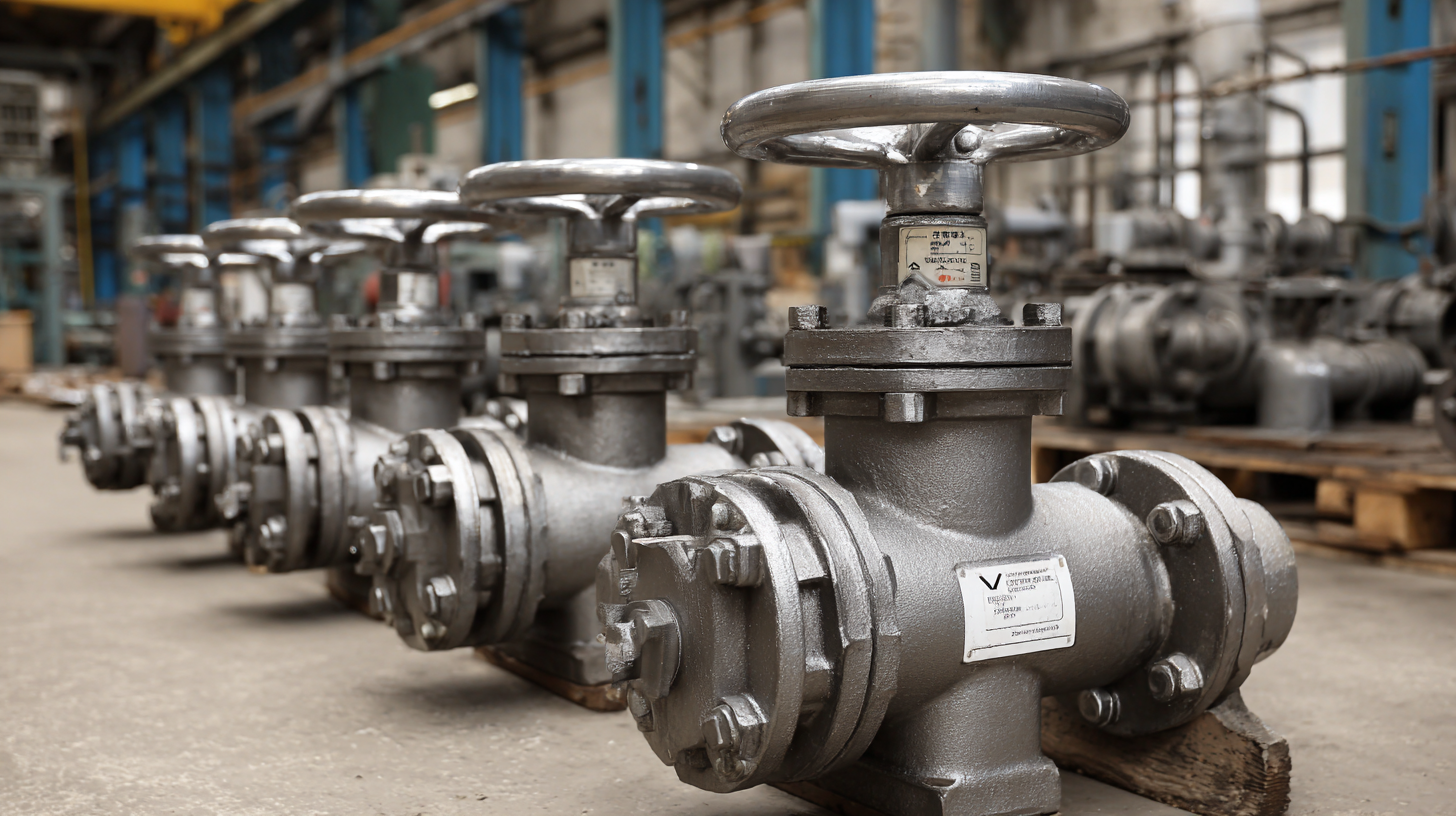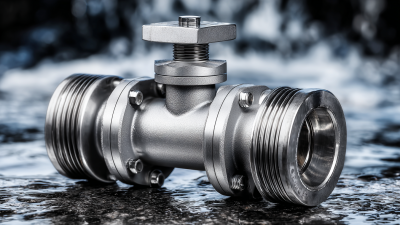When selecting the appropriate globe valves for industrial applications, it is essential to consider various factors that impact performance and efficiency. According to a recent report by Market Research Future, the global globe valve market is expected to grow at a CAGR of 6.2% from 2020 to 2027, reflecting the increasing demand across sectors such as oil and gas, water treatment, and chemical processing.
 The unique design of globe valves allows for excellent throttling and flow control capabilities, making them a preferred choice in applications requiring precise regulation. However, with numerous types and materials available, choosing the right globe valve involves an understanding of both the operational environment and the specific requirements of the process.
This guide aims to provide crucial insights and practical considerations to help engineers and purchasing professionals make informed decisions in selecting the right globe valves to optimize industrial performance and reliability.
The unique design of globe valves allows for excellent throttling and flow control capabilities, making them a preferred choice in applications requiring precise regulation. However, with numerous types and materials available, choosing the right globe valve involves an understanding of both the operational environment and the specific requirements of the process.
This guide aims to provide crucial insights and practical considerations to help engineers and purchasing professionals make informed decisions in selecting the right globe valves to optimize industrial performance and reliability.
Globe valves are crucial components in industrial applications, primarily used for regulating flow in pipelines. Their distinctive spherical body shape provides a versatile design that allows for precise control of fluid flow. Understanding the basic structure of a globe valve is essential for choosing the right one for your specific needs. The valve consists of a movable disk and a stationary ring seat, which create a throttling effect that enables smooth and accurate flow adjustments.
When considering globe valves for industrial use, several factors come into play. The material of the valve is paramount; options such as stainless steel, brass, and cast iron cater to different pressures and temperature requirements. Additionally, the size and type of the connection (flanged, threaded, or welded) must match the existing piping system. It's also essential to evaluate the valve's Cv rating, which indicates the flow capacity. A higher Cv value signifies better flow capabilities, making it critical for applications demanding high flow rates. By paying attention to these elements, industries can ensure they select the most appropriate globe valve for their operational requirements.
When selecting a globe valve for industrial applications, several key factors should be taken into consideration to ensure optimal performance. First and foremost, the intended operating conditions, such as temperature, pressure, and the type of fluid being managed, must be thoroughly evaluated. These parameters dictate the material choice for the valve body and internals. Common materials include cast iron, stainless steel, and bronze, each offering unique benefits depending on the service requirements.
Another crucial aspect is the sizing of the globe valve, which directly affects flow rate and pressure drop in the system. Properly sizing the valve involves understanding the flow characteristics and the desired Cv (flow coefficient) value. Additionally, the valve's connection type, whether it's flanged, threaded, or welded, must match the existing piping system to prevent leaks and ensure reliability. Lastly, consider the actuator type and control requirements. Opting for manual, electric, or pneumatic actuators can greatly influence the valve's operation in terms of efficiency and ease of use, making this a critical decision in the selection process.
This chart illustrates the key factors to consider when choosing a globe valve for industrial applications. The importance level is rated on a scale from 1 to 10, highlighting the relevance of each factor in the selection process.
Choosing the right globe valve material is crucial for optimizing performance in various industrial applications. Common materials include brass, bronze, stainless steel, and cast iron, each offering unique characteristics suited for specific environments. For instance, stainless steel is favored in chemical processing and food industries due to its excellent corrosion resistance and hygienic properties. In contrast, cast iron valves are often employed in water and waste treatment facilities primarily due to their strength and durability.
Furthermore, the application’s operating conditions play a significant role in material selection. High-temperature applications typically require valve materials that can withstand thermal stresses, such as high-grade stainless steel or alloys. Conversely, in industries like oil and gas, where aggressive media might be present, materials such as carbon steel may be considered, coupled with protective coatings to enhance longevity. Ultimately, understanding the specific demands of your application will guide you in selecting the most appropriate globe valve material, ensuring reliability and efficiency in your operations.
When selecting a globe valve for industrial applications, it's crucial to evaluate the flow characteristics to ensure optimal performance. Globe valves are known for their ability to provide precise flow control, making them suitable for service in various sectors including oil and gas, water treatment, and chemical processing. According to a recent industry report by Research and Markets, the global globe valve market is projected to reach USD 4.5 billion by 2026, reflecting a growing demand for efficient flow management solutions.
Flow characteristics such as pressure drop and flow coefficient play a significant role in valve selection. The flow coefficient (Cv) quantifies a valve's capability to allow fluid to flow through it under specific conditions. High Cv values indicate a valve can convey a larger amount of fluid, reducing energy consumption and enhancing system efficiency. Furthermore, understanding the valve's flow pattern—whether it's linear or equal percentage—can influence operational integrity. The American National Standards Institute (ANSI) emphasizes that selecting the right Cv can lead to an overall reduction in energy costs by up to 30% in industrial systems. Hence, a thorough evaluation of flow characteristics is essential for achieving both reliability and efficiency in valve performance.

Proper maintenance of globe valves in industrial settings is crucial for ensuring their longevity and optimal performance. According to a report by the American Society of Mechanical Engineers (ASME), improper maintenance can lead to a 30% decrease in the lifespan of these valves, leading to costly downtime and repairs. Regular inspections, alongside routine cleaning and lubrication, should be scheduled at least bi-annually to identify wear and tear early. Keeping the valve seats clean can prevent leakage and excessive wear, which directly correlates with increased efficiency and lower operational costs.

Furthermore, the National Association of Corrosion Engineers (NACE) highlights that corrosion is one of the leading factors that can compromise globe valves. Implementing a preventive maintenance program that includes monitoring the valve environment can significantly mitigate this risk. Strategies such as applying corrosion inhibitors and conducting regular pressure tests can enhance reliability. It’s also recommended to keep detailed maintenance logs to track valve performance over time, which can be invaluable for making informed decisions about replacements and upgrades in the future. This proactive approach not only extends the valve's service life but also contributes to a more efficient industrial operation overall.









Same Day Shipping
ISO Certified Production